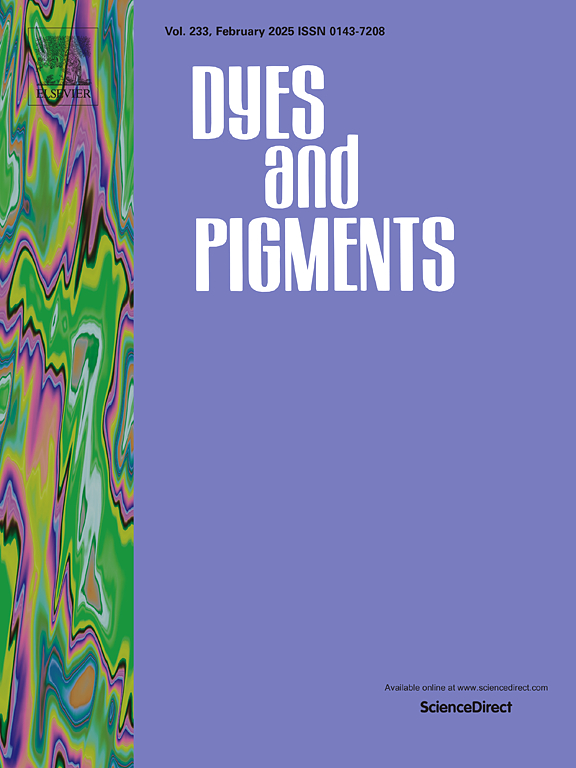Bis-arylazo-naphthobipyrrole: Synthesis, structure, photophysical properties, DFT calculations and anions sensing
IF 4.1
3区 工程技术
Q2 CHEMISTRY, APPLIED
引用次数: 0
Abstract
Three bis-arylazo-naphthobipyrrole compounds (1–3) with different substituents (-H, -Cl, and –OCH3) have been synthesized. The planar structure of compound 1 was characterized by X-ray crystallography. All compounds exhibit λmax absorption at the range of 534–549 nm, and weakly fluorescence at the range of 599–628 nm due to the extended π-conjugation. All the compounds also show solvatochromic properties to chlorinated solvents. DFT calculations indicated that the compounds prefer to adopt planar E-syn/E-syn configuration. The frontier molecular orbitals (FMOs), energy gaps (ΔE) and UV–Vis spectra of these compounds were also evaluated by DFT calculations. UV–Vis titration experiments revealed that all the compounds can selectively sensing fluoride ion in DMSO solution.

求助全文
约1分钟内获得全文
求助全文
来源期刊

Dyes and Pigments
工程技术-材料科学:纺织
CiteScore
8.20
自引率
13.30%
发文量
933
审稿时长
33 days
期刊介绍:
Dyes and Pigments covers the scientific and technical aspects of the chemistry and physics of dyes, pigments and their intermediates. Emphasis is placed on the properties of the colouring matters themselves rather than on their applications or the system in which they may be applied.
Thus the journal accepts research and review papers on the synthesis of dyes, pigments and intermediates, their physical or chemical properties, e.g. spectroscopic, surface, solution or solid state characteristics, the physical aspects of their preparation, e.g. precipitation, nucleation and growth, crystal formation, liquid crystalline characteristics, their photochemical, ecological or biological properties and the relationship between colour and chemical constitution. However, papers are considered which deal with the more fundamental aspects of colourant application and of the interactions of colourants with substrates or media.
The journal will interest a wide variety of workers in a range of disciplines whose work involves dyes, pigments and their intermediates, and provides a platform for investigators with common interests but diverse fields of activity such as cosmetics, reprographics, dye and pigment synthesis, medical research, polymers, etc.
 求助内容:
求助内容: 应助结果提醒方式:
应助结果提醒方式:


